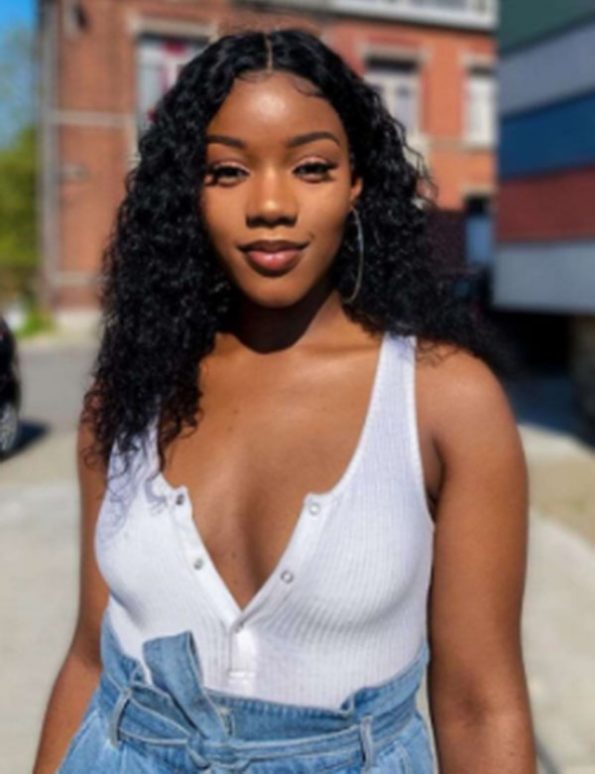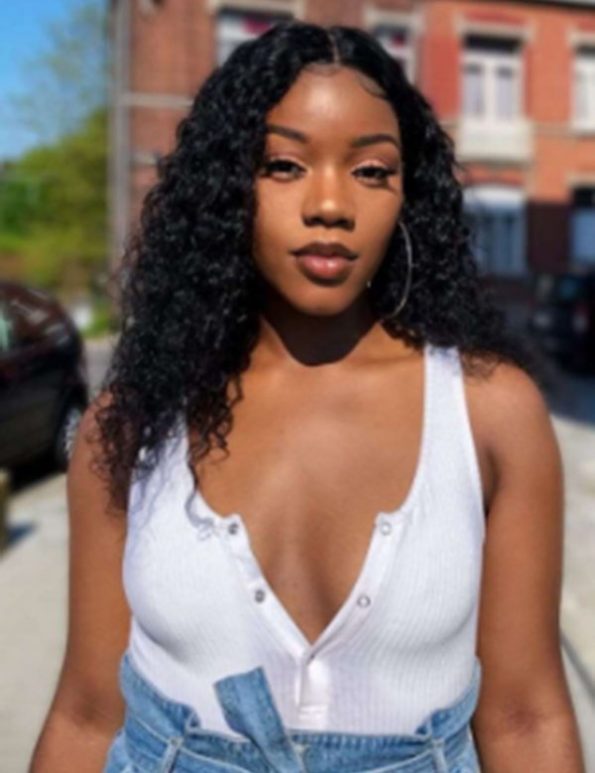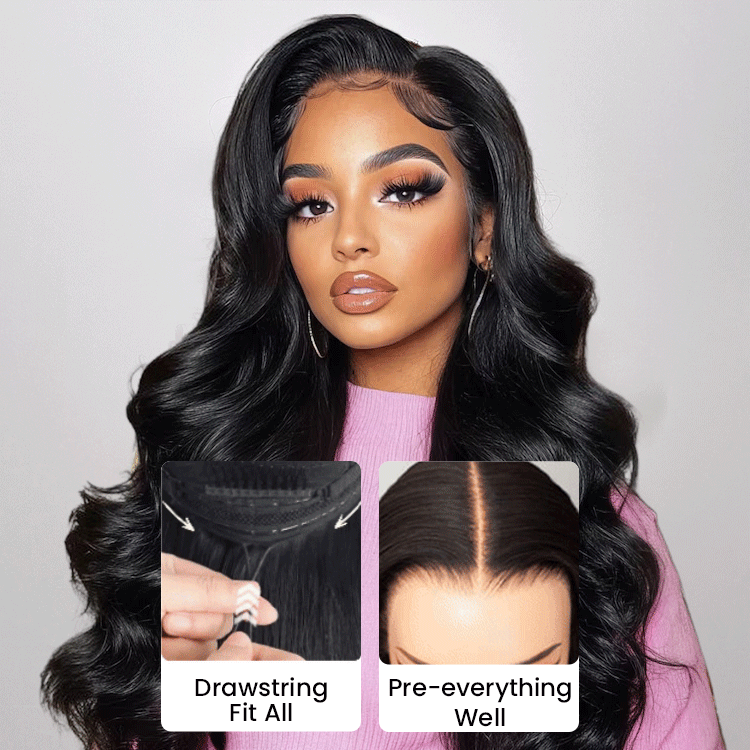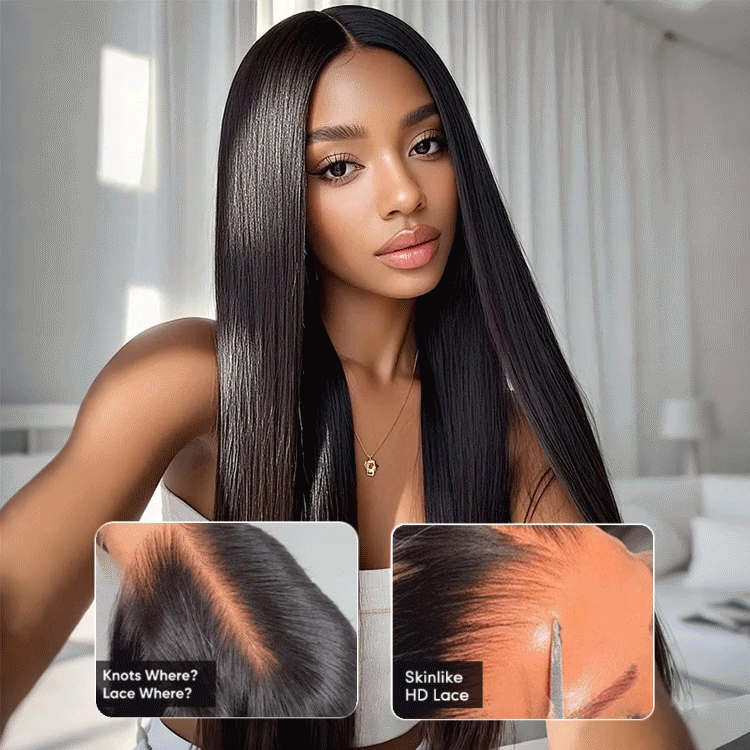You may run into phrases like “hair density” if you are unfamiliar with wigs. In this instance, human hair wigs often range in density from 100% to 200%. Everything is dependent on the type you like. This essay is focused on assisting you in comprehending the significance of hair density and assisting you in making the appropriate density selection. To understand more, keep reading this article.
Wig density – what is it?
As represented as a percentage, wig density ranges from low hair density (50–60%) to high hair density (200% and higher), and it indicates how full your wig is. How full your wig will appear after you wear it will directly depend on its density. Wigs of lower density will appear thinner, while wigs of higher density would appear fuller.

How is wig density categorized?
You have a wide range of choices for wig density, from 50% to 250% density. Low, medium, and high densities are additional divisions of density. Let’s investigate every wig density listed below.
60 – 90% density. The lowest density in the present, this is frequently referred to as additional light.
100 – 110% density. Another extremely light wig density that is not available on the market is this one.
120 – 130% density wig. This density is typical for the wig industry. Many people appreciate it because of its modest volume and fullness that appears genuine.
150% density wig. For those who like a little additional fullness in their units, 150% density is available. Due to its widespread use, it is simple to get.
180% density wig. Wigs with 180% density are somewhat fuller than those with 150% density. Both short and long wigs work well with this amount of density.
200% density wig. Wigs with a 200% density are regarded as full and voluminous. They work great for updos and shorter styles but also adapt themselves well to lengthier looks and styles.
250% density wig. The most full-bodied, lavish wigs available are 250% density wigs. Big, celebrity-inspired outfits go well with them.
Low-density wigs (50 to 100%). If you have naturally thin hair, low density wigs are excellent. For a more realistic-looking hairline, low density wig caps are also utilized at the front of wigs.
Medium density wigs (130–150%). In comparison to low-density wigs, medium density wigs are fuller and have greater volume, providing the wearer with additional style options.
High density wigs (180–250%). When you’re feeling glam and want to wow others, high-density wigs give you the greatest fullness. The majority of well-known influencers who upload videos and photographs of their hair on TikTok and Instagram do so while wearing high-density wigs. Despite what some sites claim, high-density wigs may appear quite realistic.
Why should you be concerned with wig density?
Wig density is important, despite the fact that some people find it perplexing and others find it annoying. It has a direct impact on a number of things, including how your wig will match your face, the styles you can design, how the wig feels on your head, and more. Let’s get a little more into the specifics in the next section:
Density has an impact on how your wig looks. Wigs with lower densities will be clearly thinner than those with greater densities. A high-density wig will give you all the volume you need to produce a stunning appearance. Also, a wig with a greater density provides you more styling options, whereas a wig with a lower density might not have enough fullness to pull off some looks.
Your wig care regimen will change depending on the density of the wig. Low-density, medium-density, and high-density wigs all require different maintenance (more on this later).
Density has an impact on your wig-wearing experiences. If you wear a high-density wig, you’ll feel like a queen as you flip your hair back and forth. Wigs with lower densities could not provide you with the same level of luxury.
The price of wigs is influenced by the hair density. Wigs with higher hair densities are more expensive. Simply put, this is because high-density wigs have more hair overall.
Selecting a hair density that is similar to your actual hair density can give you a more natural appearance.
Thickness versus density of the hair.
There is a big difference between hair density and hair thickness. We’ll clarify both of these concepts for you in the next section.
The amount of hairs that are sewn onto a wig cap is referred to as hair density. The wig density increases with the number of hairs present. Hence, the density of the wig will be lower the fewer the quantity of hairs.
Contrarily, the breadth of each individual hair is referred to as the hair’s thickness. There are coarse and fine hairs as well as thicker hairs (or thick).
In terms of length, recommend wig density.
The appearance of various wig densities will vary depending on the length of the hair. The wig density you choose should suit your own preferences, however the following suggestions might assist you in picking one that will complement your wig length.
Short (6 to 10 inches): We advise selecting a density between 120% and 150% for short haircuts. These densities will make your designs appear the most natural and lower their likelihood of becoming overly bulky.
Medium (12 inches to 16 inches): We advise selecting a density between 130% and 180% for medium-length designs. Decide on your ideal density based on the amount of volume you require.
Length (18 to 22 inches): Long hair is best suited for denser weaves to give you ample volume and richness. Between 150% and 250%, depending on density.
Extremely long (24 to 30 inches or longer): For extra long hair, 250% density is advised. Your hair will be full from the roots to the tips.
Expert advice on selecting the ideal hair density.
It’s crucial to prepare and think wisely before placing your initial purchase for the hair system.
I. What kind of hair style you want to achieve.
A good hairstyle may make your hair appear authentic and natural. The thick hair pattern will work better with layered hairstyles. To make poor hair density appear fuller and thicker, one might choose to add bouncy curls.
II. Size matters.
Another significant element is the correlation between base size and density. You might want to alter the densities on the sides and back of a larger hairpiece so you don’t have overly bulky hair, depending on the wave/curl, length, and style of your own natural hair. Naturally, you have to size your foundation more carefully when using smaller hair systems. III. Keep length and style in mind.
Your hair’s length and the style you want to achieve should both be taken into consideration, just like with the wave and curl. You definitely don’t want to start off with a vary thick density, which will give people the impression that you are wearing a wig if your hairstyle is a shorter cut with plenty of life or curls on top. A clean, healthy-looking part and complete coverage of the scalp are important for longer, flatter hair, so you may want to make sure the top is dense enough.
IV. Your personal hair’s density.
For you to select a hairpiece with matching hair density, it is crucial to know the density of your naturally growing hair.
V. Before placing an order, think about the weigh.
More hair in your system means more overall weight on your head, hair that is bulkier and more difficult to attach, and hair that takes longer to dry. Heavier density options reflect these factors. Over time, after you adjust to them, all of these issues become simple to handle. The weight, however, can be discouraging for beginners and provide extra challenges when learning how to utilize attachments and style their new hair. When you have too much hair to style, you’ll become much more upset than when you have too little hair to manage, of course the decision is yours.
VI. Work your way up.
Starting with your optimum density would not be a smart option if you are new to wearing hair systems since you would appear drastically different overnight and you could feel more at ease with anything on your head. Due to this, if you are new user of the wig, ordering the system at a lower density at the beginning could be preferable for you. You might increase the density by 10% or 20% on successive orders to attain the thicker appearance you want after gaining some experience with wearing hair and perfecting your attachments. You may determine the ideal density for you after a few months.
VII. Depending on your age.
Not always is it better to have more hair. While selecting the hair density, keep in mind your age. More specifically, young people are more suited to have thick hair than older people.
VIII. Take curl and wave into account.
While choosing density, it is important to keep in mind that the tightness of a wave or curl can significantly alter the volume of hair. Choosing the right density requires careful consideration because there is a significant difference in the densities depending on how tight the curl or wave is. Although though straight and curly hair are of same density, curly hair will appear fuller. You must significantly reduce the density for a tight curl. As a result, you must modify the density of your hair.

Summary up.
Whether hair density is truly so significant, you might be asking yourself. Indeed, hair density is a significant factor. People might seem more attractive if they have hair that is thicker and fluffier. People notice your look right away when they first meet you, whether it’s at a gathering, an interview, or a restaurant. They will observe your hair while discussing looks. It will impact the way people see you if your hair appears pale and aged. This explains why the majority of people who experience baldness or weight loss experience some sort of guilt or annoyance about the issue. This explains why hair density is crucial. Hair density is important and should be maintained since it can enhance one’s attractiveness. The best option for a more attractive appearance is thick hair aka high density hair.


